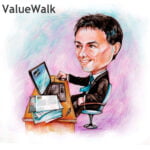Investing is not a number game; it is a mind game! The investors need to be well aware of their thoughts, their rationality and the implications as the minds of the investors play the most significant role in their decision-making process.
An understanding of the behavioural biases and their impact can make one a better investor by increasing awareness of the irrational forces that affect the investment decisions. The distorted and irrational judgements can lead to wrong and biased decisions, and hence huge losses.
One of the most commonly observed behavioural biases is the Hindsight Bias.
Hindsight Bias
Hindsight Bias is commonly known as the “knew-it-all-along effect.” It is a common perception bias. The people affected by the hindsight bias believe that the occurrence of an event in the past was predictable and obvious. However, in actual, the event was not obvious or predictable. It is the tendency to change one’s opinion after new information has been provided.
For example, when an investor buys a stock and the price falls, he would end up believing that he knew that the price will go down. This is due to the hindsight bias, when in reality the investor never actually had all the information in the past to predict the outcome. It was only later when more information was available that the fall became obvious and predictable.
Thus, hindsight bias makes the people and the investors overestimate the accuracy of their own judgements. Could the investor really see that the stock price will fall? No, because if he did, he would have never bought the stock in the first place. It is his own overestimation due to the hindsight bias that makes him believe that he could see it coming.
Causes of the Hindsight Bias
Hindsight Bias is often caused by the reconstructive nature of memory. People do not have a perfect memory, and when they look back on things, they tend to fill up the gaps with what they want to believe. Thus, they tend to think that they knew what is going to happen.
It is also caused by the fact that the actual outcomes are more easily remembered that the many possibilities that did not occur. It is this tendency that causes the people to overestimate the accuracy of their predictions.
The hindsight bias also tends to give a satisfying feeling to people considering they knew it all. This makes them delve further into the bias and think that they knew it was coming.
Effects of the Hindsight Bias
The most harmful effect of the hindsight bias is that it is the precursor to overconfidence bias. The investor who keeps on believing that he knew everything about every situation has a strong inclination to become overconfident. When the overconfidence keeps growing unchecked, the investor starts obsessing that he has accurate stock-picking and decision making abilities, which ends up in damaging financial decisions in due course of time.
Hindsight bias also leads to looking for only the expected outcomes. Since the investors are not thinking of all the possible outcomes, they stop planning for unexpected ones. This may cause many nasty surprises to the investors.
The bias also leads to mistaken analysis as the ones affected by hindsight bias tend to use their memory more than the available data. It is a trap that clouds the decision making process. The investors only remember the times when their predictions were right and forget the wrong ones.
How to Overcome the Hindsight Bias?
Just like the other forms of behavioural biases, the hindsight bias is also deep-rooted into the psychology of people. It is also a difficult bias to detect and measure, as most of the people are not aware that they harbour it. So, the first step is for the investor to accept and admit his susceptibility. The investors must know that they are vulnerable to this bias and how harmful the effects can be.
To overcome the hindsight bias, the investors must be aware of the mistakes made by them in the investment world and should learn from the mistakes. Rather than focusing only on the rightness of the decisions, they must also be prepared to accept that decisions can go wrong, and take this opportunity to learn and implement in the future.
The investors must avoid being overconfident because it ends up making them take the same incorrect decisions again and again. Once the investors have a realistic view of their own strengths and weaknesses, it becomes easier to improve performance and not make the same mistakes again.
Above all, it is of paramount importance to remain rational while taking investment decisions. The research must be done thoroughly and all the decisions must be based on data and analysis, rather than memories and emotions.
Thus, hindsight bias may be difficult to overcome and deal with, but once taken care of, it opens a long way for the investors to a bright and successful investing track. Happy Investing!













